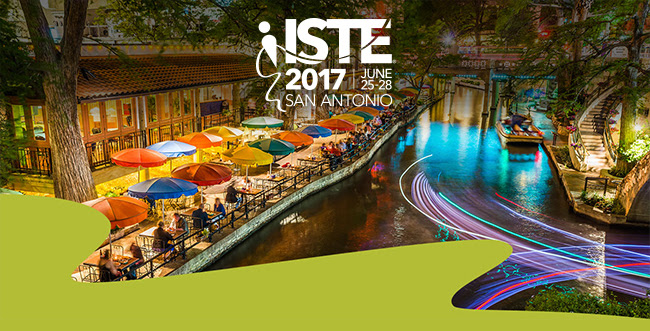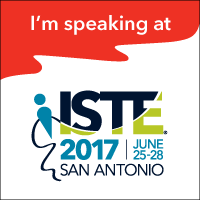We are pleased to announce the acceptance of our full day ISTE 2017 Workshop Gentle Introduction to Coding and 3D Modeling!

ISTE 2017 Workshop Gentle Introduction to Coding and 3D Modeling – Outline
The six hours will be divided into three parts:
- Part 1: Karel Coding (110 minutes plus 10 mins break)
- Part 2: Turtle Coding (110 minutes plus 10 mins break)
- Part 3: 3D modeling (2 hours including a 10 mins break)
Part 1
Participants will be taught the programming language Karel the Robot. The main advantages of this language are that (a) it is visual and provides instant feedback, (b) it has very simple syntax that resembles simplified English and (c) code formatting corresponds to Python. For example, to tell the robot to walk straight towards the next wall, one types
while not wall
go
The simplicity of the syntax makes it possible to easily translate algorithms into code which is extremely important for beginning programmers. Participants will also create their own mazes and games, and the most successful ones will be showcased to the rest of the audience. Based on our experience from teacher training workshops and camps for kids we know that this part of the workshop will be a lot of fun.
Part 2
Participants will be introduced to the Python Turtle. This is a step up from Karel programming because the Turtle uses full Python syntax, but its huge importance lies in the simple logic and visual nature with instant feedback. After learning a few elementary commands for the Turtle, participants will be able to draw beautiful patterns such as the Peace Sign, Deathly Hallows, Triquetra and others, and export them as STL files for 3D printing. The participants will also learn how to publish their creations on the web and share with their friends via email.
Part 3
In the last part of the workshop, participants will be introduced to basic principles of 3D modeling. We will use a well known scripting language for solid modeling called PLaSM (check its Wikipedia page https://en.wikipedia.org/wiki/PLaSM). The power of this language is that it allows the user to easily create and manipulate 3D objects. For example, to create a yellow sphere of radius 1 and display it, it is sufficient to type
s = SPHERE(1)
COLOR(s, YELLOW)
SHOW(s)
Hence, the code is just simplified and abbreviated English. Again, this is very important for the beginning learner, because it simplifies the transition of his/her geometrical idea into the computer model. In addition to creating a number of 2D and 3D shapes the participants will learn how to move (translate) and rotate them in 3D space, how to stretch and shrink them, how to erase parts of them, how to create intersections and unions, and how to combine various operations to create complex 3D models. They will also learn how to export their models for 3D printing and share on the web. The workshop will be concluded with presentations of the most successful 3D models created by participants. Last but not least, every participant will receive a 3D print and a printed brochure with all projects.
